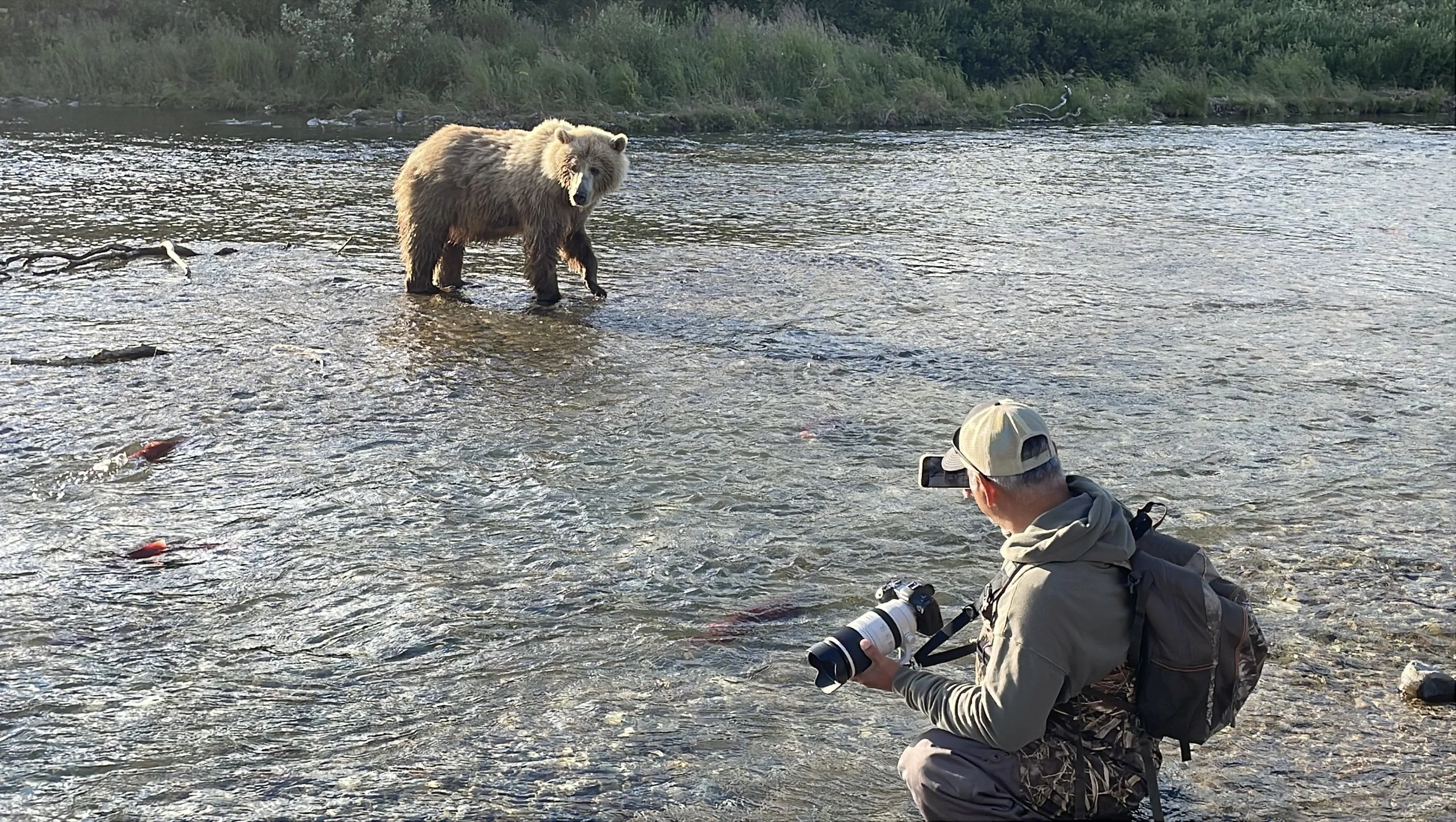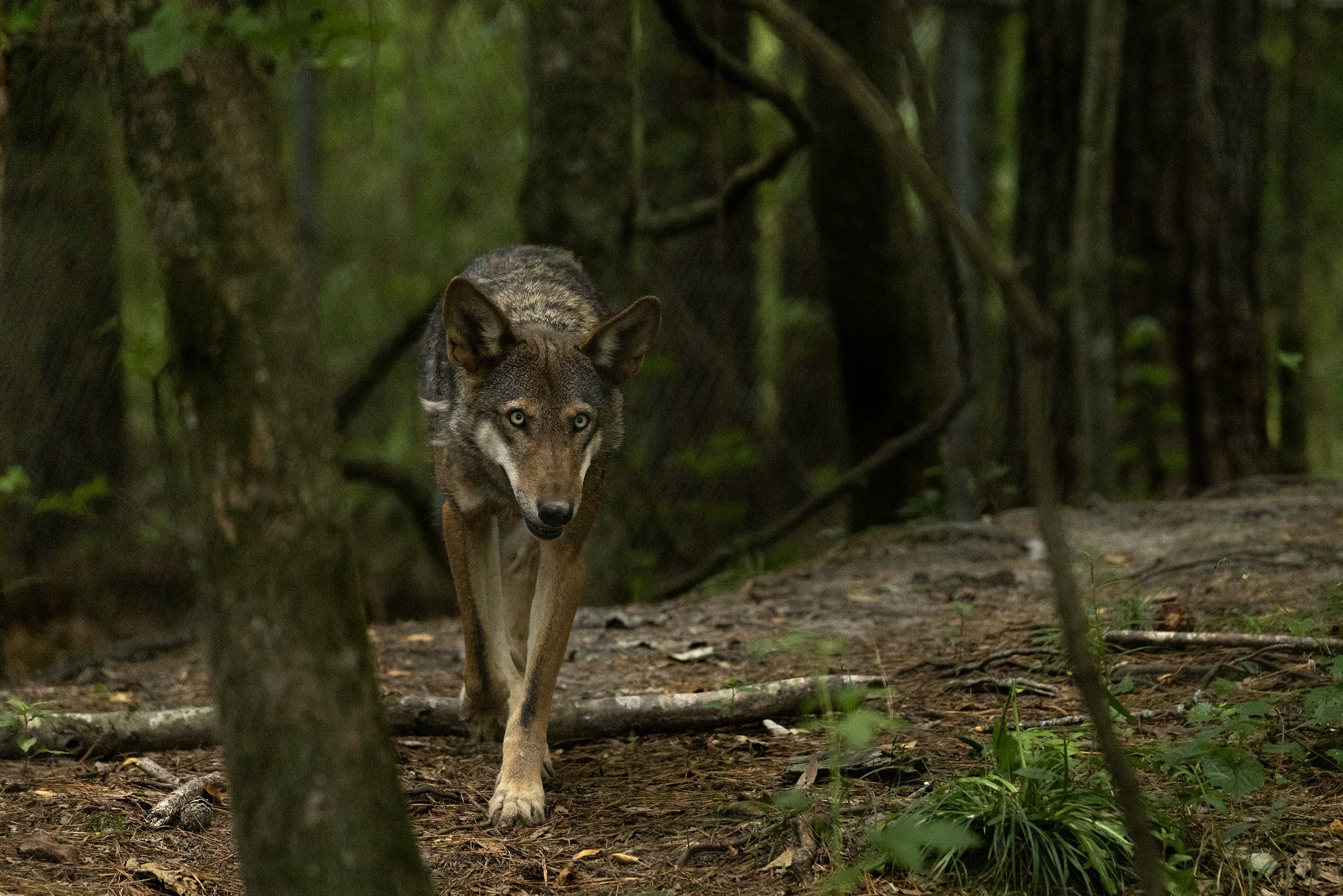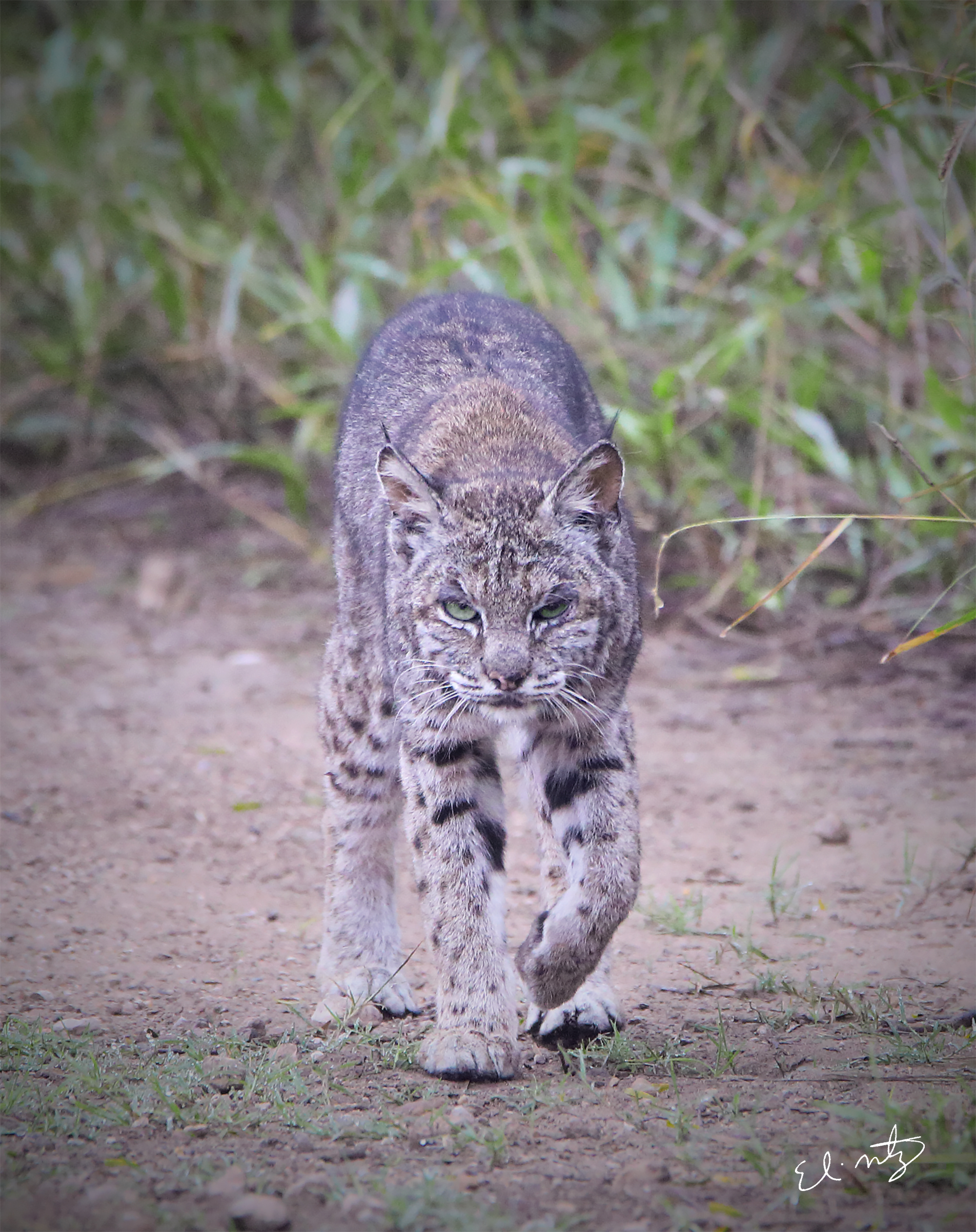It’s Colassal’s Dire Wolf on the cover of Time.
There’s something ancient and haunting about the idea of a dire wolf.
Not just the Game of Thrones version, but the real thing, a massive predator that once roamed the Americas, now extinct for over 10,000 years.
And now, thanks to Colossal Biosciences, it might be coming back.
Or… something that looks like it.
This week, Colossal announced progress on creating a genetically engineered “dire wolf,” not a perfect resurrection, but a modern hybrid with dire wolf traits, bred from existing canid species.
Powerful. Bigger. Ancient in look, new in design.
It’s the kind of headline that makes you sit back and ask: What are we actually doing here?
Captive red wolf, North Carolina.
Are We Saving Species, or Rebuilding Them?
The most frequent criticism of Colossal’s work is a simple one:
Why are we trying to bring back animals that are already gone… when we can’t seem to protect the ones we still have?
And it's a fair question.
Take red wolves. Fewer than 20 survive in the wild.
Their genetics are a mess, decimated by bottlenecks, inbreeding, and habitat loss.
But Colossal is also working on cloning red wolves to help strengthen their gene pool and possibly reintroduce viable, healthier animals into the ecosystem.
Colassal has already created three cloned red wolves.
To some, that’s playing god. To others, it’s the only chance this species has left.
There is enough DNA from this 39,000 year old cave bear to help bring back this species… the question is, should we?
But here’s where it gets complicated:
If cloning works, and species can be brought back or “restored” in a lab… what happens to our sense of urgency to protect the wild in the first place?
What happens when politicians or the public say: “Let them die off, we can always bring it back later”?
That’s not science fiction anymore.
That’s happening now.
I’ll admit, a big part of me wants to see a mammoth walk the tundra.
Or a dodo waddle through a misty jungle.
Or hear a thylacine call echo through the trees.
My passion for wildlife wants to believe this is a good thing.
A hopeful thing.
But I know this isn't a rewind button on extinction.
A thylacine, declared extinct. Scientists are working to bring this apex marsupial back to life, with hopes of reintroducing it to the wild to help restore balance to it’s ecosystem.
What’s being created is not truly what we lost. These are new animals, genetically influenced descendants, not perfect replicas. They may look like what once was, but they’re built from fragments, pieced together with modern tools.
It’s not resurrection. It’s reimagining.
And we have to ask ourselves, what’s the real reason behind all of this?
Are we doing it to fix what we’ve broken?
To scratch that scientific itch… because we can?
Or are we doing it just because it’ll make a dump truck full of money?
Lyuba the baby mammoth found in Siberia… displayed in Kalinigrad, Russia
Red wolves might survive now thanks to cloning, but are they still wild if their survival comes from a lab?
Some conservationists argue that these efforts create “GMO animals,” not true reflections of nature. Others see it as an evolution of conservation, using new tools to fix old damage.
The truth probably lies somewhere in between.
If a cloned red wolf mates with a wild one, and their pups thrive in the swamps of North Carolina, does it really matter how the lineage got a second chance?
If nature accepts them, maybe we should too.
Captive North Carolina Red Wolf.
Colossal isn’t just playing with DNA. They’re forcing a conversation we all need to have, about what it means to protect life, to restore it, and to possibly recreate it.
And I’ll be honest, I’m a torn soul in all of this.
Colossal claims the mammoth will return in 2028.
Because the moment a woolly mammoth walks again, or a thylacine is spotted moving through the forest, I’ll be the first in line to see it.
That’s the animal lover in me.
That’s ten years old me; cross-legged on the floor, flipping through dinosaur books, wishing I could reach through the pages and be there.
So yes, part of me wants this… Desperately.
And another part wonders what it really means if we do succeed in bring back extinct species.
I don’t have all the answers. I just know I want a future where wild animals don’t only exist because someone built them.
I want to stand on the edge of a forest or a beach or a frozen tundra, and see something real move through it… ancient, untamed, and still here.
If we use science to help that happen, not just in labs, but in the wild, then maybe we’re not playing god.
Maybe we’re just trying to make things right… Before it’s too late.
Thank you for reading our Blog.
*New Blogs posted 3–4 times a week. (sometimes more.)
Follow along for fresh stories, trip updates, and raw moments from the wild.















